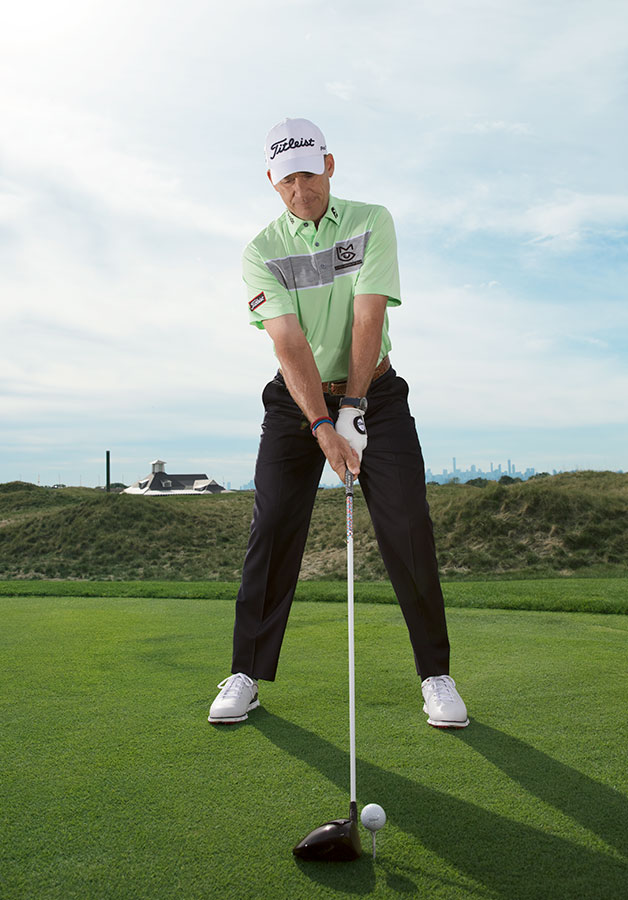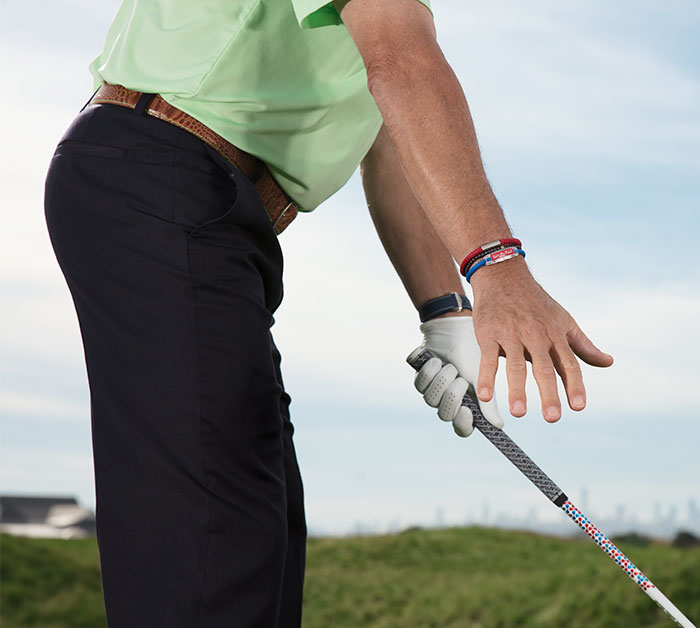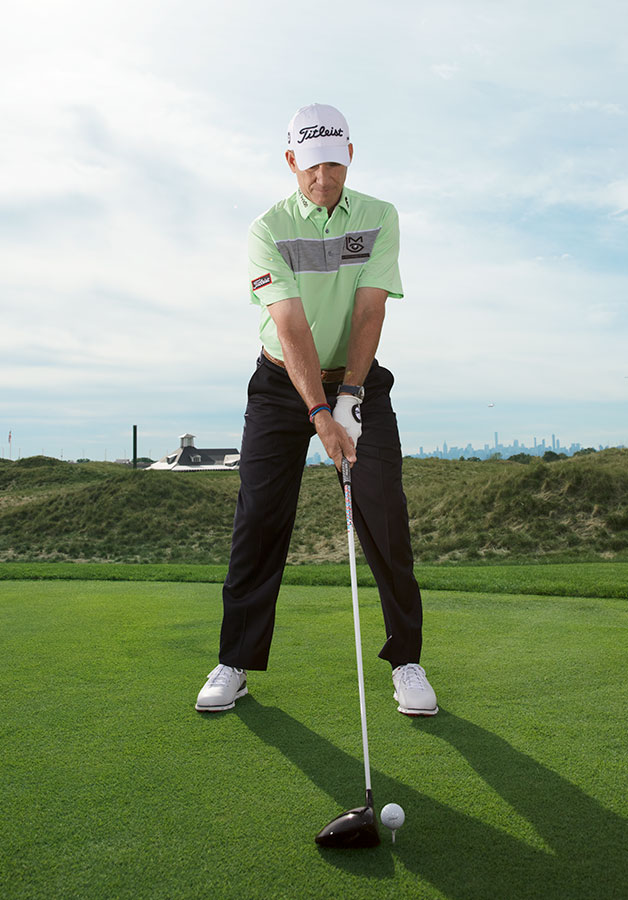Every course has holes where you absolutely have to drive your ball to one side. The other side is dead – water, out-of-bounds, deep bunkers, trees. And on some of those holes, the good side is harder for you to get to, given your normal shot shape. That conflict causes anxiety and usually some kind of awkward, uncommitted swing.
I’m going to give you a simple plan, depending on your tendencies, that will transform the way you drive the ball on those holes. Best of all, my advice is focused only on the setup. Get set properly, and you can just drive away.
Pick Out Something Positive
Remember this when you step up to a tee shot with trouble on the side you fear: ignore the picture. A lot of golfers get consumed with the trouble; it’s all they see. I want you to identify a positive target, and set your attention there. It’s a good idea to not even look in the landing area where the problems are. Figure out where you want your ball to end up, then pick something in the distance – a tree, a house, a greenside bunker – and see a shot that puts you in line with that target. Now, you still have to make a drive that gets you there.
Read below, and I’ll show you how.
Three Keys To Stay Left
“If you fight a slice, set up with your shoulders closed and tilted back.”
 1. Strengthen your grip
1. Strengthen your grip
Grip the club with your top hand first, rotating it away from the target so you see more of the logo on your glove. To add your bottom hand, start with it in a low position, by your trail thigh [left]. Bring the hand up to the club, which will naturally put it more on the underside of the grip. This procedure sets your hands in what’s called a “strong” position, making it easier to close the clubface through impact and produce a draw.
 2. Tilt your shoulders
2. Tilt your shoulders
With a strong grip, you’ll tend to close your shoulders at setup. Great, because that helps predict a swing path more to the right. Of course, you don’t want to hit the ball right, but it’s easier to close the face to a path that’s moving right – and the face is the biggest determinant of direction. When the shoulders are closed, they’re also tilted away from the target, so that’s a good checkpoint [right].
3. tee it higher
Tee your ball so more than half of it is above the top of your driver. That puts the centre of gravity of the clubhead much lower than the middle of the ball, which promotes a draw. Also, play the ball farther back, a few inches behind your front heel, so you make contact with the clubhead still travelling on the outward part of its arc (in to out). The clubface will be closed to the swing path at impact, and the ball will start to the right and curve left.
Three Keys To Stay Right
“If you fight a hook, set up with your shoulders open and more level.”
 1. weaken your grip
1. weaken your grip
Grip the club with your top hand first, setting the thumb more straight down the handle so you see less of the logo on your glove. Bring your bottom hand in from a position directly across from the handle [right]. This will put the hand more on top of the grip, as opposed to underneath it. Now your hands are in what’s called a “weak” position, which promotes an open clubface at impact and helps keep the ball from going left.
 2. level your shoulders
2. level your shoulders
With a weak grip, you’ll tend to set up with your shoulders open. That helps predict a swing path more to the left. I know, you don’t want to hit the ball left, but with the path moving that way, it’s easier to keep the clubface open. (Remember, the face is the biggest factor in shot direction.) When the shoulders are open, they’re also more level to the ground, and the trail arm feels really extended [above].
3. tee it lower
Tee your ball so most of it is below the top of your driver. That puts the centre of gravity of the club more in line with the middle of the ball, which promotes a fade. Then, play the ball off the instep of your front foot. This is slightly forward of the standard position and will help you strike the ball with the clubhead travelling on the inward part of its arc (out to in). The face will be open to the path, and the ball will start left and curve right.




